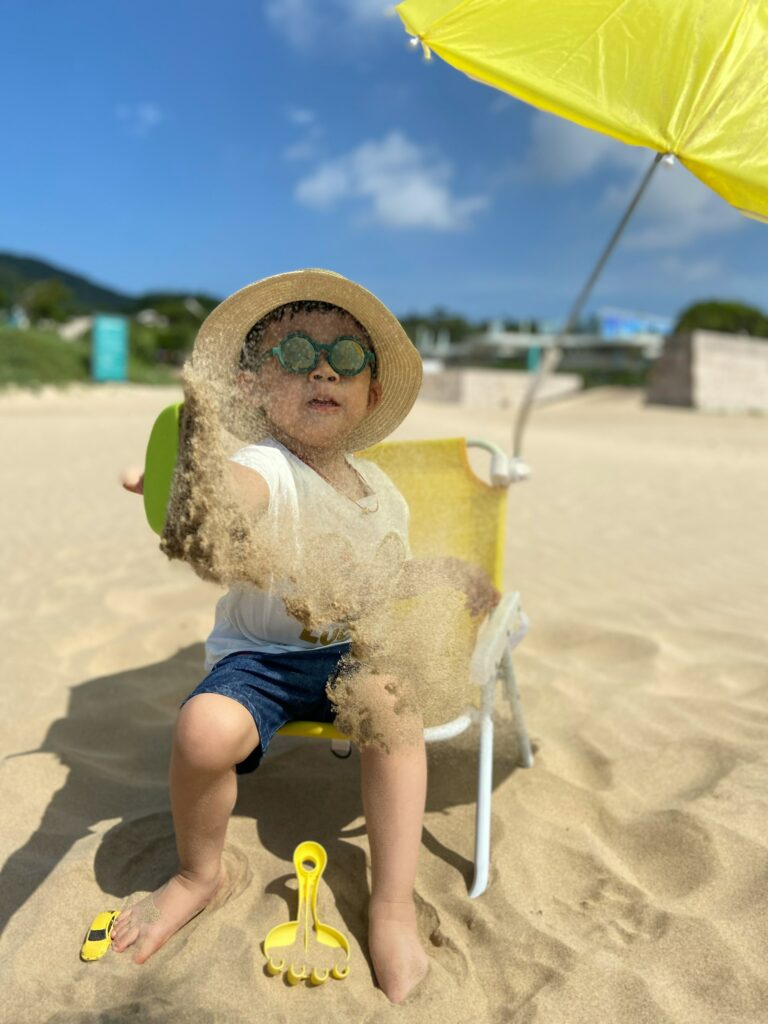Asthma in children over 3 years old—few phrases strike more anxiety into a parent’s mind. The sight of your child gasping for air, that tiny chest heaving under invisible pressure, is enough to send any heart racing. You wonder: Is it just another cough, or the beginning of something else entirely? As symptoms become more pronounced beyond the toddler years, uncertainty takes root. Will it affect daily life, school, even sleep? Relief lies in understanding—what triggers asthma in children over 3 years old, how it manifests, how to respond confidently. Take a moment. Imagine breathing easier, not just for your little one, but for yourself—armed with practical science-backed insight. This journey uncovers why asthma emerges, deciphers its many disguises, and guides you through both high-tech advances and everyday steps for reclaiming control. Let’s shed light on an often misunderstood condition, transforming parental worry into proactive wisdom.
Understanding What Asthma Means for Children Over 3
When experts use the term “chronic respiratory condition” for asthma in children over 3 years old, they’re describing a scenario where the airways—delicate pipes ferrying oxygen from the outside world to hungry, growing lungs—are persistently sensitive. Inflammation becomes a frequent, unwelcome visitor. The result? Narrower passages, increased mucus, and hyper-reactivity to everyday triggers.
Picture this: your child, previously only bothered by occasional sniffles, now starts to battle with episodes of wheezing, a persistent cough that seems to lurk in the background, and bursts of breathlessness after activity or during chilly nights. Asthma does not disappear between these flare-ups. Instead, it lingers, shaping how the immune system reacts to allergens, infections, and irritants. Parents often wonder if this is just a phase, perhaps triggered by a cold or a seasonal change. For children over 3, symptoms tend to recur, with patterns becoming clearer as language and self-awareness develop—think: “My chest feels tight!” or the unmistakable sound of a whistle sneaking through each exhale.
Questions can swirl: Does it run in the family? Is something at home making it worse? Why do some days seem peaceful, and others so restless? Such uncertainty underscores the importance of expert evaluation—detailed symptom diaries, family histories, physical exams, and when possible, measures like spirometry to actually quantify how well your child’s lungs transfer air.
The Many Faces and Patterns of Asthma in Young Children
No two children experience asthma in children over 3 years old identically. Some exhibit allergic asthma, their symptoms swelling with spring’s pollen or the arrival of a new pet. Others may thrive in calm moments, only to struggle following playground sprints (exercise-induced asthma) or amid nighttime quiet (nocturnal asthma).
- Allergic (Seasonal) Asthma: Synergy between pollens, molds, or animal dander wreaks havoc. Symptoms flare during high-pollen seasons, or after exposure to dust or furry friends. City life can be unfriendly to fragile airways—urban pollution and secondhand smoke amplify risk.
- Exercise-Induced Asthma: Imagine your child giggling through tag, only to double over in a bout of coughing or clutch their chest moments later. Physical exertion cools and dries airway linings, triggering symptoms post-activity.
- Nocturnal or Emotional Asthma: As night falls, a dry cough intrudes, keeping both parent and child from restful sleep. Emotional surges—excitement or anxiety—may act as less obvious triggers.
Recognizing these patterns provides you—parent and advocate—a roadmap. With vigilance, you begin noting when symptoms cycle in, learning to anticipate and act rather than simply react.
Unraveling Causes: Genetics Versus Environment
So why does asthma in children over 3 years old develop in some and not others? The answer fuses biology and backdrop. Genetics play an undeniable role—children whose parents or siblings have asthma, eczema, or allergies are more likely to run this respiratory gauntlet themselves. The medical term atopy describes this inherited inclination for allergic diseases, linking asthma to conditions like allergic rhinitis and eczema.
But genes don’t write the whole story. Environmental exposure shapes the script. Pollution—traffic exhaust, industrial emissions, even cooking smoke—surrounds children in city environments. Indoors, dust mites, pet dander, mold, and cockroach residue quietly raise inflammation. Even the simple act of living with a smoker can double the risk, with secondhand smoke irritating the airways.
Respiratory viruses—think RSV or rhinovirus—can tip a susceptible child from “just a cough” to an asthma diagnosis, especially in those with a history of prematurity, low birth weight, or obesity. Each of these factors, alone or in combination, may contribute to airway inflammation and impaired lung growth, heightening vulnerability.
Recognizing the Warning Signs
Parents often become experts at deciphering their child’s signals. But asthma in children over 3 years old has a way of camouflaging itself, masquerading as colds or persistent bronchitis. Seek out these telltale hints:
- Persistent wheezing—a high-pitched, musical breathing sound, especially while exhaling.
- Dry, hacking cough, particularly at night, during laughter, or after physical activity.
- Shortness of breath, visible effort when breathing out, or complaints of chest tightness.
- Symptom worsening during allergy seasons, colds, or exposure to triggers.
Occasionally, symptoms escalate. Perhaps you notice nostrils flaring with each inhalation, lips tinged gently blue, or stomach muscles working with every breath. Inability to speak in full sentences? Confusion? These signal a medical emergency. Do not hesitate—seek immediate care.
Diagnosing Asthma: The Role of History and Modern Medicine
Asthma in children over 3 years old rarely surrenders its secrets in a single visit. Diagnosis unfolds through pattern recognition—detailed histories, observations, and directed tests. A meticulous symptom diary provides clinicians with invaluable data: when symptoms flare, what provokes them, how quickly they subside.
For children beyond their sixth birthday, objective tools like spirometry offer a window into lung function—measuring how much and how quickly air moves. Lowered readings can signify airway narrowing typical of asthma. Recurring or difficult-to-control symptoms, ambiguity, or severe episodes may earn a referral to a pediatric pulmonary specialist.
Don’t overlook allergy testing—whether via blood work or skin prick—designed to pinpoint unique sensitivities, empowering parents to preemptively modify the environment.
Classifying Asthma: A Guide for Tailored Treatment
One child’s mild episode does not mirror another’s daily battle. Physicians classify asthma in children over 3 years old along a continuum:
- Intermittent asthma: Symptoms crop up no more than twice weekly, with night-time awakenings limited and daily life unimpeded.
- Mild persistent asthma: More frequent but not daily symptoms, some nighttime disruption, minor physical limitations.
- Moderate persistent asthma: Symptoms loom daily, with weekly night-time bouts and noticeable activity restrictions.
- Severe persistent asthma: Constant companion to the child—symptoms emerge throughout the day, sleep is disturbed, and daily activity, even play, feels out of reach.
This nuanced spectrum is not merely academic. A child’s place on this scale dictates medication choices, lifestyle adaptations, and monitoring strategies.
Navigating Asthma Attacks and Exacerbations
Asthma, particularly in children over 3, can escalate from smoldering embers to raging fire within hours. A typical asthma attack—a sudden rise in symptoms—usually responds to reliever inhalers. If symptoms stubbornly persist, refusing to abate for hours or even days despite maximum medication, this constitutes an exacerbation.
Triggers are many: abrupt cessation of steroid use, new respiratory infections, accidental encounters with allergens, or increased exposure to cigarette smoke. As airways tighten further, airflow drops precipitously, and oxygen delivery falters. If quick-relief treatments fail, the stakes rise—prompt medical intervention is not optional, but lifesaving.
Daily Management: Turning Anxiety into Empowerment
Crafting a Personalized Asthma Action Plan
Empowering a family begins with a personalized asthma action plan, mapped out with your healthcare provider. Imagine a traffic light:
- Green zone: Routine medications, symptom-free, regular activity.
- Yellow zone: Early warning—perhaps more cough, subtle breathlessness. Action: adjust medication dose, limit triggers.
- Red zone: Full flare. Prompt rescue therapies, possibly emergency contacts.
Pin the plan to the fridge, share copies with teachers, relatives, and coaches. Familiarity breeds response, not panic.
Medications: What, When, and How
- Quick-relief inhalers: Short-acting beta agonists (for example, albuterol). Essential for symptom flare-ups; keep them close at all times.
- Long-term controllers: Inhaled corticosteroids form the backbone, reducing inflammation over time. Leukotriene receptor antagonists, like montelukast, and combination inhalers (ICS + LABA) serve moderate to severe cases.
- Other options: Anticholinergics and, in emergencies, oral corticosteroids.
Dose adjusts to weight, age, and symptom history. Technique matters—spacers, masks, and (for the young) mouthpieces ensure that precious medication reaches deeply into small airways. Nebulizers are reserved for those struggling with inhaler use. Routine, practice, and reminders smooth the daily regimen, transforming a medical chore into routine self-care.
Beyond Medication: Avoidance and Early Warning
Avoiding triggers isn’t weakness—it’s wisdom. Allergy evaluations spotlight avoidable culprits. Peak flow monitoring, available for older children, tracks declining lung function before symptoms explode. Teachers and caregivers trained in the action plan form an invisible safety net around your child as they venture beyond your sight.
Everyday Prevention: Creating Safe Spaces
Healthy environments both indoors and out shield vulnerable airways. Consider the following practical strategies:
- Ventilate every day, even during cold spells. Open windows in low-pollen hours (usually early morning or late evening).
- Resist the urge to overheat the home in winter; keep rooms below 68°F.
- Address mold proactively—ventilate after showers or cooking, inspect hidden corners regularly.
- If pets are beloved, limit bedroom access, bathe and brush animals outdoors.
- Battle dust mites with damp cloth cleaning, minimal carpeting, and hot washes for bedding (above 130°F).
- Avoid drying laundry in bedrooms, and be wary of pollen peaks when drying outdoors.
- After outdoor play, have your child shower and shake out clothes to remove lingering pollen.
Smoke—whether direct or drifting from another room—undermines all efforts. Air purifiers, when available, can help. Monitor air quality reports; on high-pollution days, focus on indoor fun. Never underestimate the value of a balanced diet, healthy weight maintenance, and age-appropriate physical activity—the lungs, like any organ, thrive on good habits.
School, Daycare, and Life Beyond Home
Hand a copy of your child’s action plan to any caregiver—teachers, coaches, babysitters. Ensure quick-relief medications are within arm’s reach. Empower staff with basic asthma education so that every outing, nap, and lesson is covered. Children with well-controlled asthma in children over 3 years old should—absolutely—participate fully in school, sports, birthday parties, and other activities. Activity fosters confidence, resilience, and total health.
Emotional Health: Supporting the Whole Child (and Parent)
Every parent who’s watched, helpless, as asthma in children over 3 years old takes hold, knows the silent ripple of anxiety that lingers long after the cough subsides. Younger kids might fear being different. Older ones may dread missing out or appear embarrassed by inhalers.
Normalize open conversations—ask about worries, dispel myths without minimizing reality, offer relaxation techniques suitable for children (deep breathing, storytelling, gentle distraction). Involve kids in every age-appropriate aspect of their care. Encourage, don’t lecture. Sometimes, the right support means reaching beyond family—counseling and support groups exist for both parent and child.
Long-Term Outlook and Emerging Frontiers
Failure to effectively manage asthma in children over 3 years old can disrupt sleep, count for missed school days, and slow normal growth. Prolonged, unresolved inflammation leaves airways scarred, permanently reducing lung capacity.
Yet, there is hope. Many children with mild, infection-driven asthma see symptoms dwindle or vanish with age, especially when triggers are managed. For those with persistent, allergen-driven patterns, or ongoing risk factors, symptoms may continue into adolescence and adulthood—but modern treatments enable robust, ordinary lives. Self-management skills, reinforced and expanded with each developmental stage, support independence and safety.
Medical progress is relentless. Biologic therapies—medications targeting specific immune pathways—now offer hope for the most severe or resistant cases. Allergen immunotherapy helps highly sensitive children. Smart inhalers and connected digital tools remind, record, and empower—while telemedicine opens new doors to family-centered care.
Public health efforts, too, matter: policies reducing air pollution, supporting maternal health, and encouraging breastfeeding all count in the prevention column. Early, regular intervention remains the most reliable route to healthy, confident kids.
Myths Versus Medical Fact
- Most children won’t “grow out” of asthma completely—symptoms may recede, but vigilance remains key.
- Inhaled corticosteroids—when used as directed—are safe. Their benefits far outweigh unlikely side effects.
- Children with well-controlled asthma in children over 3 years old can, and should, partake in all physical activities.
- Asthma is never contagious—it can’t be transmitted, even though infections may trigger it.
- Ongoing therapy is essential, even during symptom-free periods.
- Not every child wheezes—cough and chest tightness are important signals, too.
- Avoidance strategies matter, but anti-inflammatory medication is what keeps underlying airway swelling at bay.
When to Seek Emergency Help
If your child:
- Struggles to breathe, gasping for each sip of air,
- Displays blue lips or fingernails,
- Cannot speak a full sentence,
- Appears unusually lethargic or becomes confused,
- Fails to improve with reliever inhalers,
don’t wait—professional urgent care is non-negotiable. Your tailored asthma action plan should almost always contain the necessary steps and emergency contact information.
Key Takeaways
- Asthma in children over 3 years old is common and often persistent, yet with vigilant management—including routine, avoidance of triggers, and appropriate medication—offers the potential for normal childhood experiences.
- Identifying symptoms early and crafting a robust, practical action plan provide a foundation for confidence and safety at any age.
- Modern treatments, from simple inhalers to next-generation biologics and smart devices, can dramatically improve quality of life and future outlook.
- Comprehensive education for families, teachers, and the children themselves enables resilience, empowerment, and quick response in emergencies.
- Emotional well-being matters every bit as much as physical health—open dialogue, supportive communities, and gentle encouragement pave the way for long-term success.
- For personalized advice and free health questionnaires for your child, consider exploring the Heloa app—an extra tool in your toolkit to support your family’s asthma journey.
Questions Parents Ask
Can sudden weather changes trigger asthma symptoms in children over 3 years old?
Yes, shifts in weather—especially sudden drops in temperature or increased humidity—can sometimes provoke asthma symptoms in children. Cold air may irritate sensitive airways, while humid conditions can promote the growth of molds or increase pollen, making breathing a bit more difficult for some kids. If you notice your child’s symptoms often worsen with certain weather patterns, don’t hesitate to share these details with your healthcare provider. Keeping a journal may help identify patterns and adjust the asthma management plan accordingly. This kind of awareness can support you and your child in anticipating those tougher days.
Is it possible for my child to participate in physical activities with asthma?
Absolutely, most children with asthma can take part in sports and playground fun, just like their peers. In fact, regular activity supports lung health and boosts confidence. The key is ensuring your child’s asthma is well-managed and that quick-relief medication is accessible if needed. It’s helpful to inform teachers or coaches of your child’s condition and their action plan. If you have concerns about your child getting breathless during play, discuss this with their doctor—sometimes a small adjustment to their treatment or pre-activity inhaler use can make all the difference.
What are some ways to help my child take their inhaler correctly?
Helping your child master their inhaler technique may take a little patience, but it’s completely achievable. Using a spacer or holding chamber makes it easier for medication to reach the lungs, especially for younger children. Turning inhaler time into a routine, maybe with a favorite song or sticker chart, can encourage consistency. It’s natural to feel concerned if your child resists or struggles—gentle encouragement, demonstration, and practice together, perhaps under the guidance of a nurse or pharmacist, often lead to success. Celebrate small steps, and remember, you’re not alone on this journey.
Further reading:









